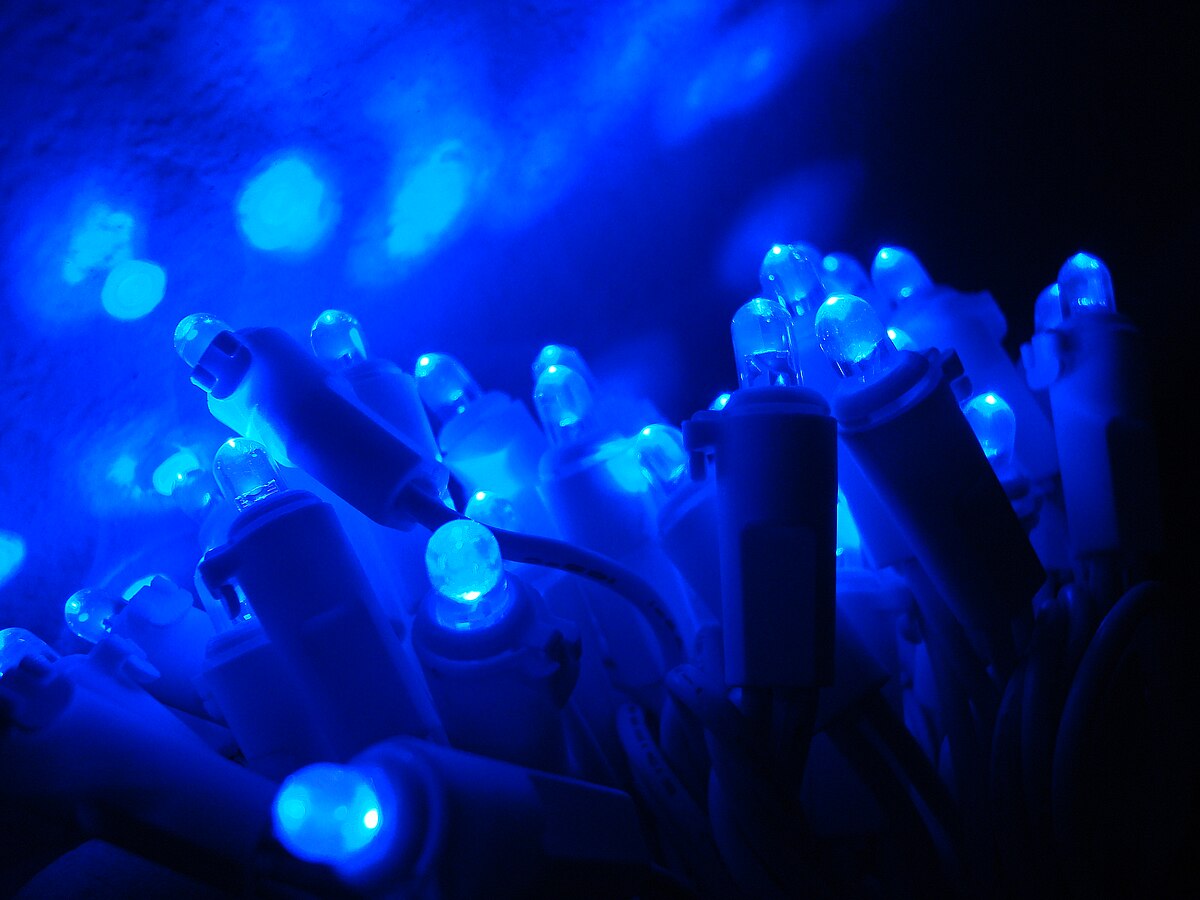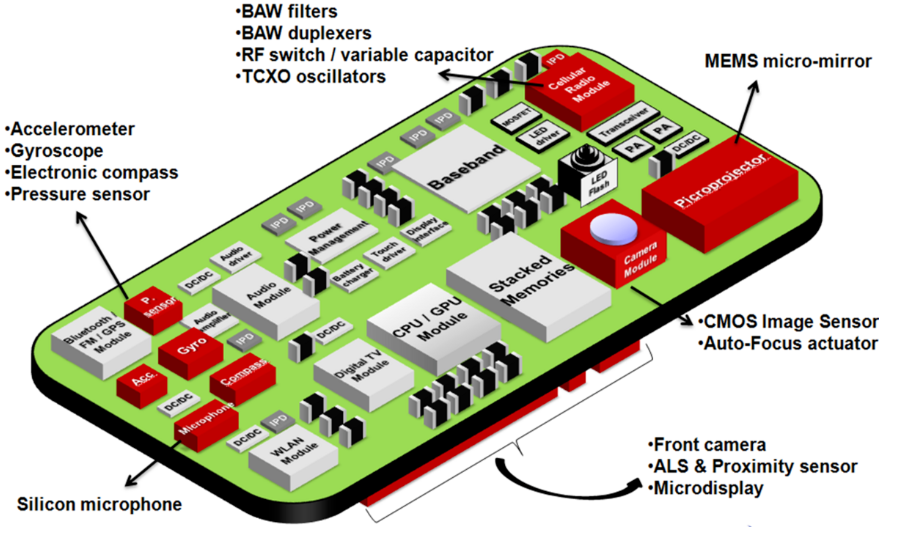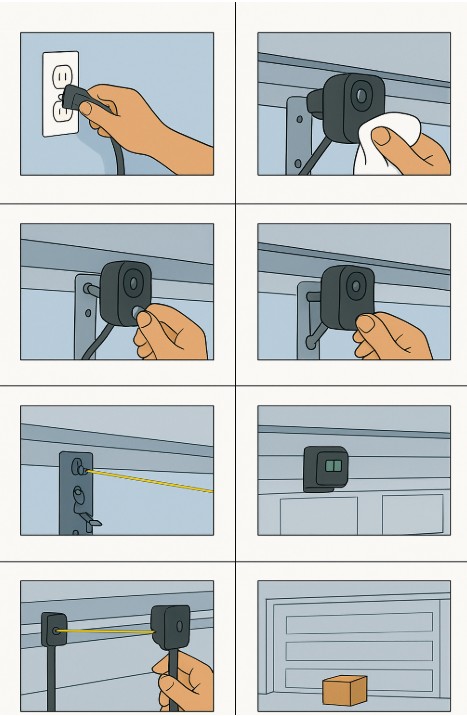A Complete Guide on How to Align Garage Door Sensors Perfectly
A garage door is a very important part of your home. It provides security and convenience. When it works correctly, you probably do not think about it much. But when your garage door suddenly stops closing, it can be a big problem. You might press the button on your remote or the wall, and the door starts to go down, only to reverse and go right back up. This common issue is often caused by a very small but very important part of your garage door system. The problem is usually with the safety sensors. These sensors need to be perfectly aligned to work correctly. If they are not aligned, the garage door opener thinks something is blocking the path, and it will not close. This is a safety feature, but it can be frustrating when nothing is actually in the way.
Learning how to align garage door sensors is a valuable skill for any homeowner. It can save you from a lot of trouble. It can also save you the cost of calling a professional for a simple fix. This guide will give you all the information you need. We will explain exactly what garage door sensors are and how they work. We will show you the clear signs that tell you your sensors are misaligned. We will also talk about what causes them to become misaligned in the first place. Most importantly, we will provide a detailed, step-by-step process to help you fix the problem yourself. This guide uses simple language and clear instructions. You do not need to be an expert to follow along. We will cover everything from turning off the power to testing your work to make sure the job is done right. Following these steps will help you get your garage door working properly and safely again.
What Exactly Are Garage Door Sensors?
Before you can learn how to align garage door sensors, it is important to understand what they are and what they do. Garage door sensors are a critical safety feature on all modern garage door openers. They are also known by other names, like photo-electric eyes or safety reversal sensors. You can find them near the bottom of your garage door tracks on each side. Each sensor is a small box, usually black, and it is mounted on a metal bracket. One of these boxes is the sending sensor, and the other is the receiving sensor. The sending sensor shoots a narrow, invisible beam of infrared light across the opening of the garage door to the receiving sensor.
As long as the receiving sensor can "see" this continuous beam of light, it knows that the path is clear. When you press the button to close your garage door, the opener checks to make sure this connection is solid. If the connection is good, the door will close normally. But if anything breaks this beam of light while the door is closing, the system reacts instantly. The receiving sensor loses sight of the beam. It sends a signal to the garage door opener's motor. The motor then immediately stops the door from closing and reverses its direction, sending it back to the fully open position. This system was made a mandatory safety feature in the United States in 1993. It was created to prevent people, pets, or objects from being trapped and crushed under a closing garage door. It is a simple but very effective technology that has prevented countless accidents and injuries over the years. Understanding this basic function is the first step in troubleshooting alignment problems. The entire system depends on that perfect, unbroken line of light between the two sensors.
5 Clear Signs Your Garage Door Sensors Are Misaligned
When your garage door starts acting strange, it can be hard to know what the problem is. But when the issue is with the sensor alignment, there are some very specific signs to look for. Knowing these signs will help you quickly identify that you need to check your sensors. This saves you from wasting time looking at other parts of the garage door system.
One of the most common signs is when the garage door starts to close but then reverses for no reason. You will see the door move down a few inches or a foot, and then it will suddenly go back up. This happens because the opener motor does not get the "all clear" signal from the sensors. It assumes something is in the door's path.
Another very clear sign is a blinking light on your garage door opener motor unit. This is the main box that is usually mounted on the ceiling. Most openers have an LED light that will blink in a specific pattern to tell you what is wrong. A blinking light is often the error code for a sensor problem. You can look in your garage door opener's manual to see what the specific blink code means, but it very frequently points to a sensor obstruction or misalignment.
You should also look at the small LED lights on the sensors themselves. Each sensor usually has a small light. The sending sensor often has a yellow or amber light that should be on and steady. The receiving sensor often has a green light. This green light should also be on and steady. If the green light on the receiving sensor is off or flickering, it means it is not getting the signal from the sending sensor. This is a direct sign of a misalignment or an obstruction.
A fourth sign is when you can only close the garage door by pressing and holding down the button on the wall. This action is a manual override feature. It tells the opener to ignore the sensor signals and close the door anyway. If the door closes normally when you hold the button down but will not close with a single press from the remote or wall panel, the problem is almost certainly with the safety sensors.
Finally, you might notice the garage door closes only part of the way before it stops and goes back up. This can happen if the sensors are just barely out of alignment. The vibration from the door moving might be enough to break the weak connection between them, causing the door to reverse. If you see any of these five signs, your first step should always be to check the alignment of your garage door sensors.

What Causes Garage Door Sensors To Become Misaligned?
Garage door sensors are designed to be sturdy, but they are located in a high-traffic area of your home. This means they can easily be knocked out of alignment. There are several common reasons why this happens. Understanding these causes can help you be more careful around the sensors in the future to prevent the problem from happening again.
The most common cause of misalignment is something accidentally bumping into one of the sensors. This happens all the time. You might hit a sensor with a garbage can, a lawnmower, a bicycle, or even your car's tire. Because the sensors need to be perfectly aligned, even a small nudge can be enough to move one of them just enough to break the connection. Since they are only about six inches off the ground, they are in a very vulnerable position.
Another cause is the vibration from the garage door itself. Every time your garage door opens and closes, it creates vibrations that travel through the metal tracks. Over a long period of time, these small but constant vibrations can slowly shake the sensor's mounting bracket loose. As the bracket becomes loose, the sensor can shift its position or sag downwards, leading to a misalignment. This is more likely to happen if the wing nuts or screws holding the bracket were not tightened securely in the first place.
Sometimes, the problem is not with the sensor's position but with something blocking its view. Dirt, dust, cobwebs, or leaves can build up on the lens of a sensor. This can block the infrared beam just like a physical object would. This is not technically a misalignment, but it produces the exact same symptoms. That is why it is always a good idea to wipe the sensor lenses clean before you start trying to realign them.
Even the weather can sometimes be a cause. In very cold weather, the metal brackets can contract slightly, which could potentially shift the alignment. Also, direct sunlight shining into the receiving sensor's lens can sometimes interfere with its ability to see the infrared beam from the sending sensor. Some sensors come with sun shields to help prevent this problem, but strong, direct light at certain times of the day can still be an issue for some models. Checking for these common causes can help you solve the problem quickly.
A Detailed Guide on How to Align Garage Door Sensors
Now we will go through the step-by-step process of aligning your garage door sensors. This process is simple, but it is important to follow each step carefully. Taking your time and being precise will make sure you get a perfect alignment that lasts. You will only need a few basic tools, like a soft cloth, a tape measure, a string, and a small level.
Step One: Turn Off the Garage Sensor Power Source
Before you start working on any part of your garage door system, your first priority must be safety. You need to completely cut the power to the garage door opener. This is a very important step. It prevents the door from accidentally moving while you are working near it. It also protects you from any risk of electric shock, even though the sensor wiring is low voltage. There are two simple ways to do this. The easiest way is to unplug the garage door opener's power cord from the electrical outlet on the ceiling. If you cannot easily reach the plug, you can go to your home's main electrical panel or breaker box. Find the circuit breaker that controls the power to your garage. Then, switch that breaker to the "OFF" position. After you do this, you should test it to be sure the power is off. Try pressing the wall-mounted garage door button. If the light on the button does not turn on and nothing happens, you have successfully cut the power.
Step Two: Clean the Sensor Lenses
Before you start loosening brackets and moving things, take a moment to clean the sensor lenses. As we talked about earlier, a dirty lens can block the infrared beam and make it seem like the sensors are misaligned, even if they are not. This simple step could solve your problem without any need for adjustments. Get a clean, soft cloth. You can slightly dampen it with water if you want, but do not use any harsh chemical cleaners. Gently wipe the round lens on the front of both the sending and receiving sensors. Remove all dust, dirt, grime, and any cobwebs that might be around the sensor or its bracket. Once they are clean, you can see if this fixes the issue by briefly restoring power. If the door still does not work, you can proceed with the alignment, knowing that dirty lenses are not the problem.
Step Three: Loosen the Bracket Screws
Now you can prepare to adjust the sensors. Look closely at how each sensor is attached to the garage door track. It is mounted on a metal bracket. This bracket is held in place by a screw or a wing nut. You need to loosen this fastener so you can move the sensor. You do not want to remove it completely. You only want to make it loose enough so that you can pivot the sensor up, down, left, and right. For most models, you can loosen the wing nut by hand. If it is a screw or bolt, you might need a small screwdriver or wrench. Loosen the fastener on both the sending sensor and the receiving sensor. They should now be movable, but still firmly attached to the track.
Step Four: Adjust the Sensors Manually
This is where you will perform the main alignment. Your goal is to get the sensors pointing directly at each other. A good way to start is to look at the LED lights on the sensors themselves. You will need to restore power for this step. Be very careful and make sure no one is near the door. Plug the opener back in or flip the breaker on. The sending sensor, which is usually the one with the amber or yellow light, should have a solid light. This tells you it has power and is sending its signal. Now, look at the receiving sensor, which is usually the one with the green light. If this light is off or flickering, it means it is not seeing the beam.
Carefully and slowly begin to adjust one of the sensors. Hold it firmly and move it slightly from left to right and up and down. As you move it, watch the green light on the receiving sensor. You are trying to find the exact spot where the light turns on and stays solid. When it lights up, you know you have a connection. It is often helpful to have another person stand on the other side of the garage to watch the light for you while you make adjustments. Once the green light is on and steady, you have a basic alignment.
Step Five: Use a String to Ensure Perfect Alignment
A visual adjustment is good, but for the best results, you should check your work with more precise methods. A simple piece of string can help you get a perfectly straight line. Get a long piece of string or twine. Tie one end to the bracket of the sending sensor. Then, walk it across the garage door opening and stretch it tight. Tie the other end to the bracket of the receiving sensor. This string now represents the path the infrared beam should be taking. Look at both sensors. Are they both pointing directly along this string line? If one is pointing slightly above or below the string, you need to adjust it until it is perfectly parallel with the string. This method helps to ensure they are not just seeing each other, but are lined up on a perfectly level horizontal plane.
Step Six: Use a Level and Adjust Sensors If Needed
Height is also very important for a good alignment. Both sensors must be at the exact same height from the garage floor. You can check this with a tape measure. Measure the distance from the center of the sending sensor down to the floor. Then, go to the other side and measure the distance from the center of the receiving sensor to the floor. These two measurements should be exactly the same. Most manufacturers recommend a height of about six inches from the floor. If one is higher than the other, loosen the bracket that attaches to the track and slide it up or down until the heights match. You can also use a small level, sometimes called a torpedo level, to make sure the sensors are not tilted. Place the level on top of the sensor housing. The bubble should be in the center. This shows the sensor is not pointing up at the ceiling or down at the floor.
Step Seven: Tighten the Bracket Screws
Once you are confident that the sensors are perfectly aligned, it is time to lock them into position. You need to tighten the wing nuts or screws on the mounting brackets that you loosened earlier. It is very important to do this carefully. If you tighten them too aggressively, you could accidentally move the sensor out of its perfect position at the last second. Hold the sensor firmly in place with one hand. Use your other hand to slowly and steadily tighten the wing nut or screw. Make it snug and secure so that it will not be moved by vibrations. Do not overtighten it so much that you strip the screw or crack the plastic bracket. Once both sides are tight, double-check the LED lights on the sensors one last time to make sure they are still solid.
Step Eight: Test Your Work Thoroughly
The final step is to test the garage door to confirm that your alignment was successful and that the safety system is working correctly. With the power on and the sensor LEDs showing a solid connection, find an object to test the reversal feature. A cardboard box or a roll of paper towels works well. Do not use yourself, another person, or a pet for this test. Press the button to close the garage door. While the door is moving down, slide the object into the path of the sensors to block the beam. The door should immediately stop and reverse to the open position. Remove the object and press the close button again. This time, let the door close all the way to the floor. If it closes smoothly without reversing, you have successfully aligned your garage door sensors.
Why You Should Call a Professional
While aligning garage door sensors is a DIY task that many homeowners can handle, there are times when it is better to call a professional garage door technician. It is important to know your own limits and when a problem is beyond a simple adjustment.
If you have followed all the steps in this guide carefully and your garage door still will not close properly, there might be a more serious issue. For example, if the LED lights on one or both of the sensors will not light up at all, even after you have checked the alignment, it could mean that a sensor is faulty and needs to be replaced. There could also be a problem with the wiring that connects the sensors to the opener motor. The wires can become damaged, frayed, or disconnected over time. Dealing with wiring can be more complicated and is often best left to a trained professional.
You should also call a professional if you see any physical damage to the sensors or their brackets. If a bracket is bent badly, it might be impossible to get a proper alignment. If the plastic housing of a sensor is cracked, moisture could get inside and damage the electronics. In these cases, parts will likely need to be replaced.
Finally, if you are simply not comfortable performing the steps, or if you are not physically able to do the work, it is always a safer option to call for help. A professional technician has the right tools and experience to diagnose the problem quickly and accurately. They can determine if it is a simple alignment issue or a more complex problem like a faulty logic board in the opener. While a service call has a cost, it also provides peace of mind knowing the job was done correctly and your garage door is safe.
FAQ
What do the different colored lights on my garage door sensors mean?
The lights are indicators that tell you the status of the sensors. Typically, the sending sensor has a solid amber or yellow light. This means it has power and is sending out its infrared signal. The receiving sensor has a green light. When the green light is solid and not flickering, it means it is receiving the signal perfectly. This tells you the sensors are aligned. If the green light is off or flickering, it means the receiver is not seeing the beam, which indicates a misalignment or an obstruction.
How much does it cost to have a professional align garage door sensors?
The cost can vary depending on where you live and the company you hire. However, for a simple sensor alignment, most homeowners can expect to pay a service call fee. This fee usually covers the first hour of labor. The cost is often between 75 and 150 dollars. If any parts, like a new sensor or bracket, need to be replaced, the cost will be higher.
Can sunlight cause problems for my garage door sensors?
Yes, it can. Direct, bright sunlight shining into the lens of the receiving sensor can sometimes confuse it. The sensor is designed to detect a specific infrared frequency, but the intense infrared radiation from the sun can sometimes overwhelm it. This can make the sensor think its beam is blocked. If your garage door only seems to have problems at certain times of the day, sunlight might be the cause. You can try swapping the sender and receiver to the opposite sides of the door, or you can buy and install sun shields that fit over the sensors to block the direct sunlight.
Why will my garage door not close even after I aligned the sensors?
If you are sure the alignment is perfect and the green light is solid, but the door still will not close, there are a few other things to check. First, check the wiring for any visible signs of damage. A staple or a pinch in the wire could cause a short. Second, the issue could be with the logic board in the garage door opener itself. Third, it is possible that one of the sensors has an internal electronic failure. It might have power and its light might be on, but it is not sending the











